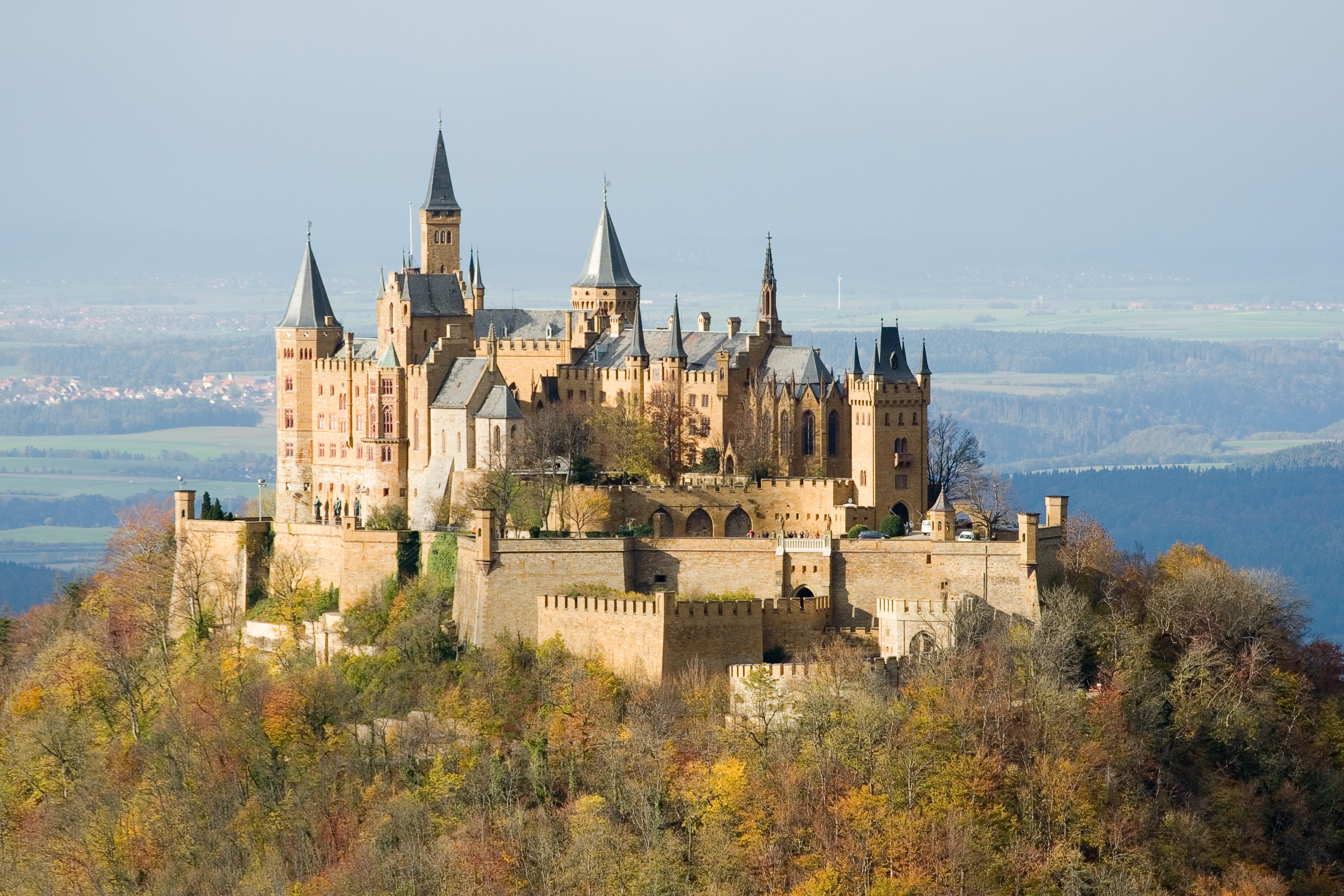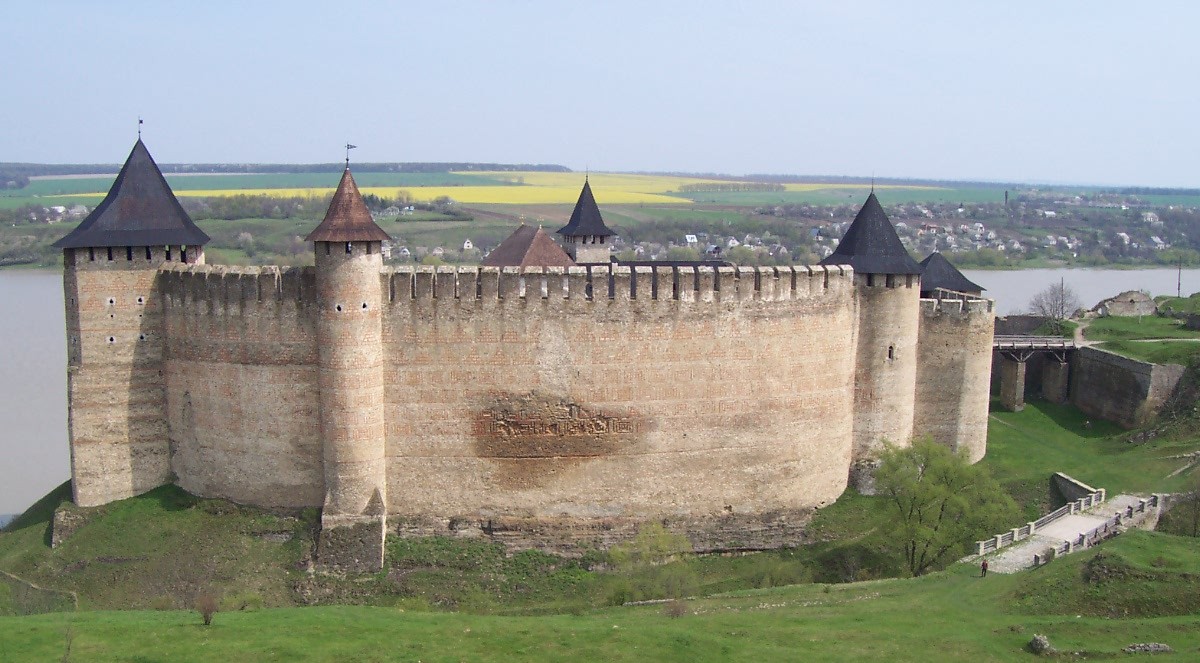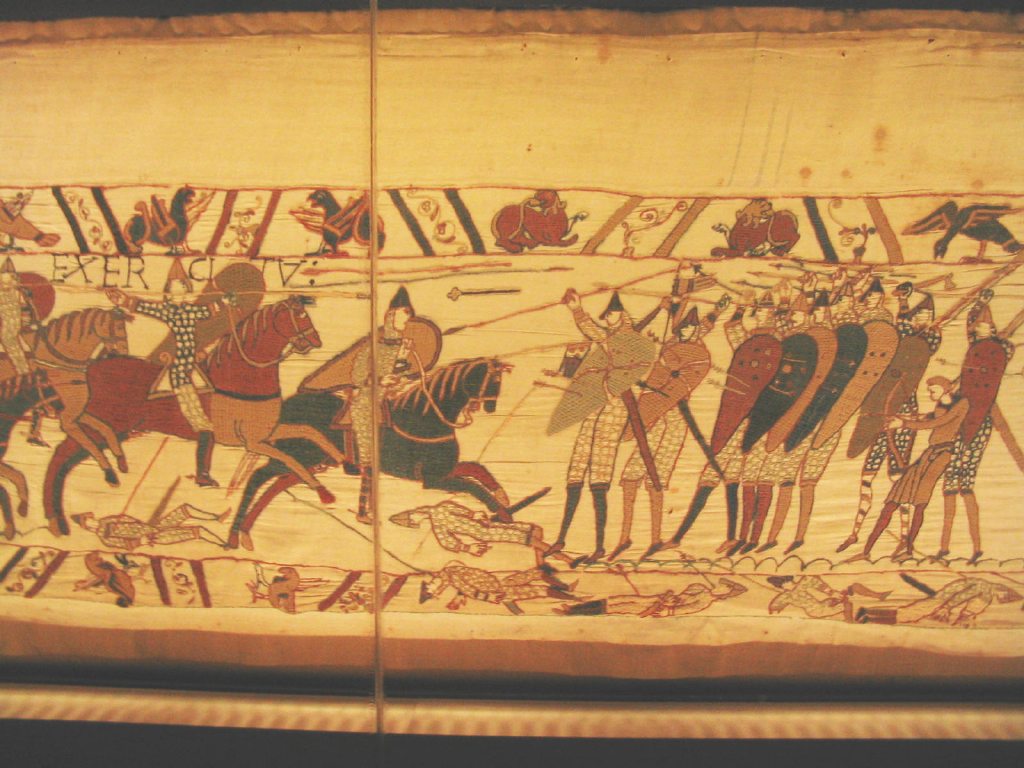|
Gräfenberg Castle (Aschaffenburg)
Gräfenberg Castle (), also called Landesehre Castle (''Burg Landesehre''), is a levelled hilltop castle near on the hill of . It is located near in the market municipality of Hösbach in the district of Aschaffenburg in the south German state of Bavaria. History The castle was probably built in the mid-13th century on and next to a fort of the La Tène period, probably later than the castle on nearby . By 1261 the castle had been destroyed during a conflict between the Rieneck counts and Electoral Mainz. In the 18th century the castle was used as a quarry and demolished apart from a few wall remains. Description The castle had a sturdy enceinte, which enclosed the entire site and guaranteed protection for its occupants. The roughly 2-metre-thick and probably over ten-metre-high shield wall with its wooden wall walk and tiled roof was integrated into the early mediaeval enceinte. The buildings in the castle courtyard were made of stone and wood. From the then treeless ... [...More Info...] [...Related Items...] OR: [Wikipedia] [Google] [Baidu] |
Burgstall
A ''burgstall'' is a German term referring to a castle of which so little is left that its appearance cannot effectively be reconstructed.''Burgstall'' in the ''Adelung'' at lexika.digitale-sammlungen.de It has no direct equivalent in English, but may be loosely translated as "castle site". Variations in the literature include ''Burgstelle'', ''Altburgstelle'', ''die Burgställe'' (plural), ''Burgstähl'' (archaic) or ''abgegangene Burg'' ("lost castle"). In German castle studies, a ''burgstall'' is a castle that has effectively been levelled, whereas a "ruin" (''Ruine'') still has recognisable remnants of the original castle above the level of the ground. Definitions The word ''burgstall'' is of medieval origin and comes from ''Burg'' = "castle" and ''Stelle'' = "pla ...[...More Info...] [...Related Items...] OR: [Wikipedia] [Google] [Baidu] |
Hilltop Castle
A hilltop castle is a type of hill castle that was built on the summit of a hill or mountain. In the latter case it may be termed a mountaintop castle. The term is derived from the German, ''Gipfelburg'', which is one of a number of terms used in continental castellology to classify castles by topology. The chief advantage of such a strategically selected site was its inaccessibility. The steep flanks of the hill made assaults on the castle difficult or, depending on the terrain, even impossible. In addition, it often commanded excellent fields of view and fire over the surrounding countryside. The sheer height of the castle above the local area could also protect the occupants of the castle from bombardment. In addition, the prominent location of such a castle enhanced its status as a residence. Nevertheless, hilltop castles presented their logistic difficulties. Without sufficiently strong pumps, water supply could be problematic if there was no well in the vicinity. The tran ... [...More Info...] [...Related Items...] OR: [Wikipedia] [Google] [Baidu] |
Hösbach
Hösbach is a market community and municipality in the Aschaffenburg (district), Aschaffenburg district in the ''Regierungsbezirk'' of Lower Franconia (''Unterfranken'') in Bavaria, Germany. As of 2023, It has a population of 13,323. Geography Location The municipality lies in the part of the ''Mittelgebirge'' Spessart known as ''Vorspessart'', 5 km from Aschaffenburg, roughly 70 km from Würzburg and roughly 50 km from Frankfurt, Frankfurt am Main. The Hösbach (river), Hösbach, from which the community's name is derived, flows into the Aschaff in the municipal territory. The central village of Hösbach is located in the valley of the Aschaff, next to the Bundesautobahn 3. However, the outlying centres are located in side valleys and, in the case of Feldkahl and Rottenberg, actually in another watershed, that of the Kahl (river), Kahl. Constituent communities Hösbach has ten ''Ortsteile'' located on five ''Gemarkungen'' (traditional cadastral areas). These a ... [...More Info...] [...Related Items...] OR: [Wikipedia] [Google] [Baidu] |
Landkreis Aschaffenburg
Aschaffenburg (Low Franconian: ) is a (district) in Bavaria, Germany. It is bounded by (from the west and clockwise) the districts of Darmstadt-Dieburg, Offenbach, Main-Kinzig (all in the state of Hesse), the districts Main-Spessart and Miltenberg, and the City of Aschaffenburg. History The history of Aschaffenburg goes back as far as the year 957. Initially a Roman settlement, it came under the authority of the electors of Mainz in 982 and was chartered in 1173. Remains of Roman settlements were found on the river Main. There was a Roman military camp in today's municipality of Stockstadt am Main. After the Roman retreat, the region became subject to Alemanni and Franks before becoming a part of the Electorate of Mainz. While the banks of the Main were populated all these centuries, the hills of the Spessart were virtually unsettled until the 13th century. The districts of Aschaffenburg and Alzenau were established in 1862, half a century after the state of Bavaria had annex ... [...More Info...] [...Related Items...] OR: [Wikipedia] [Google] [Baidu] |
Bavaria
Bavaria, officially the Free State of Bavaria, is a States of Germany, state in the southeast of Germany. With an area of , it is the list of German states by area, largest German state by land area, comprising approximately 1/5 of the total land area of Germany, and with over 13.08 million inhabitants, it is the list of German states by population, second most populous German state, behind only North Rhine-Westphalia; however, due to its large land area, its population density is list of German states by population density, below the German average. Major cities include Munich (its capital and List of cities in Bavaria by population, largest city, which is also the list of cities in Germany by population, third largest city in Germany), Nuremberg, and Augsburg. The history of Bavaria includes its earliest settlement by Iron Age Celts, Celtic tribes, followed by the conquests of the Roman Empire in the 1st century BC, when the territory was incorporated into the provinces of Ra ... [...More Info...] [...Related Items...] OR: [Wikipedia] [Google] [Baidu] |
La Tène Period
LA most frequently refers to Los Angeles, the second most populous city in the United States of America. La, LA, or L.A. may also refer to: Arts and entertainment Music * La (musical note), or A, the sixth note *"L.A.", a song by Elliott Smith on ''Figure 8'' (album) * ''L.A.'' (EP), by Teddy Thompson *'' L.A. (Light Album)'', a Beach Boys album * "L.A." (Neil Young song), 1973 *The La's, an English rock band * L.A. Reid, a prominent music producer * Yung L.A., a rapper *Lady A, an American country music trio * "L.A." (Amy Macdonald song), 2007 *"La", a song by Australian-Israeli singer-songwriter Old Man River *''La'', a Les Gordon album Other media * l(a, a poem by E. E. Cummings * La (Tarzan), fictional queen of the lost city of Opar (Tarzan) *'' Lá'', later known as Lá Nua, an Irish language newspaper * La7, an Italian television channel *LucasArts, an American video game developer and publisher * Liber Annuus, academic journal Business, organizations, and governmen ... [...More Info...] [...Related Items...] OR: [Wikipedia] [Google] [Baidu] |
House Of Rieneck
A house is a single-unit residential building. It may range in complexity from a rudimentary hut to a complex structure of wood, masonry, concrete or other material, outfitted with plumbing, electrical, and heating, ventilation, and air conditioning systems.Schoenauer, Norbert (2000). ''6,000 Years of Housing'' (rev. ed.) (New York: W.W. Norton & Company). Houses use a range of different roofing systems to keep precipitation such as rain from getting into the dwelling space. Houses generally have doors or locks to secure the dwelling space and protect its inhabitants and contents from burglars or other trespassers. Most conventional modern houses in Western cultures will contain one or more bedrooms and bathrooms, a kitchen or cooking area, and a living room. A house may have a separate dining room, or the eating area may be integrated into the kitchen or another room. Some large houses in North America have a recreation room. In traditional agriculture-oriented societies, domes ... [...More Info...] [...Related Items...] OR: [Wikipedia] [Google] [Baidu] |
Electoral Mainz
The Electorate of Mainz ( or '; ), previously known in English as Mentz and by its French name Mayence, was one of the most prestigious and influential states of the Holy Roman Empire. In the hierarchy of the Catholic Church, the Archbishop-Elector of Mainz was also the Primate of Germany ('), a purely honorary dignity that was unsuccessfully claimed from time to time by other archbishops. There were only two other ecclesiastical Prince-electors in the Empire: the Electorate of Cologne and the Electorate of Trier. The Archbishop-Elector of Mainz was also archchancellor of Germany (one of the three component titular kingdoms of the Holy Roman Empire, the other two being Italy and Burgundy) and, as such, ranked first among all ecclesiastical and secular princes of the Empire, and was second only to the Emperor. His political role, particularly as an intermediary between the Estates of the Empire and the Emperor, was considerable. History The episcopal see was established in ... [...More Info...] [...Related Items...] OR: [Wikipedia] [Google] [Baidu] |
Enceinte
Enceinte (from Latin ''incinctus'' "girdled, surrounded") is a French term that refers to the "main defensive enclosure of a fortification". For a castle, this is the main defensive line of wall towers and curtain walls enclosing the position. For a settlement, it would refer to the main town wall with its associated gatehouses, towers, and walls. According to the 1911 ''Encyclopædia Britannica'', the term was strictly applied to the continuous line of bastions and curtain walls forming "the body of the place", this last expression being often used as synonymous with ''enceinte''. However, the outworks or defensive wall close to the enceinte were not considered as forming part of it. In early 20th-century fortification, the enceinte was usually simply the ''innermost'' continuous line of fortifications. In architecture, generally, an enceinte is the close or precinct of a cathedral, abbey, castle, etc. This definition of the term differs from the more common use of ''en ... [...More Info...] [...Related Items...] OR: [Wikipedia] [Google] [Baidu] |
Shield Wall
A shield wall ( or in Old English, in Old Norse) is a military formation that was common in ancient and medieval warfare. There were many slight variations of this formation, but the common factor was soldiers standing shoulder to shoulder and holding their shields so that they would abut or overlap. Each soldier thus benefited from the protection of the shields of his neighbors and his own. History Ancient history The formation was known to be used by many ancient armies including the Persian Sparabara, Greek phalanx, and the early Roman army, but its origin and spread is unknown. It may have developed independently more than once. Although little is recorded about their military tactics, the Stele of the Vultures depicts Sumerian soldiers in a shield wall formation during the third millennium BC. By the seventh century BC, shield walls in ancient Greece are well-documented. The soldiers in the shield wall formations were called hoplites, so named for their ... [...More Info...] [...Related Items...] OR: [Wikipedia] [Google] [Baidu] |
Wall Walk
A ''chemin de ronde'' (French language, French, "round path"' or "patrol path"; ), also called an allure, alure or, more prosaically, a wall-walk, is a raised protected walkway behind a castle battlement. In early fortifications, high castle walls were difficult to defend from the ground. The ''chemin de ronde'' was devised as a walkway allowing defenders to patrol the tops of Rampart (fortification), ramparts, protected from the outside by the battlements or a parapet, placing them in an advantageous position for shooting or dropping. References External links * Castle architecture {{castle-stub ... [...More Info...] [...Related Items...] OR: [Wikipedia] [Google] [Baidu] |







